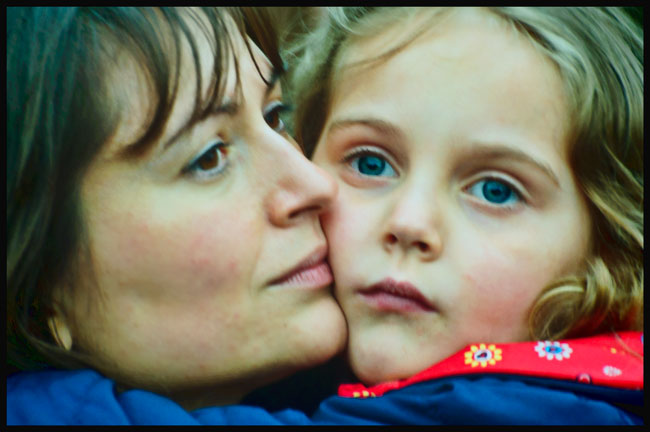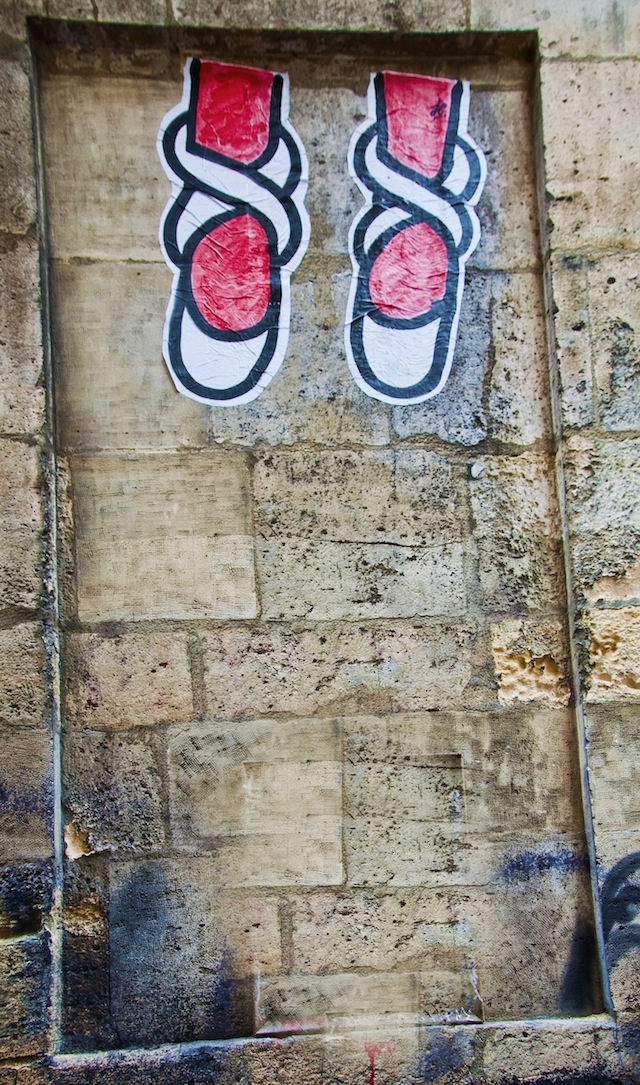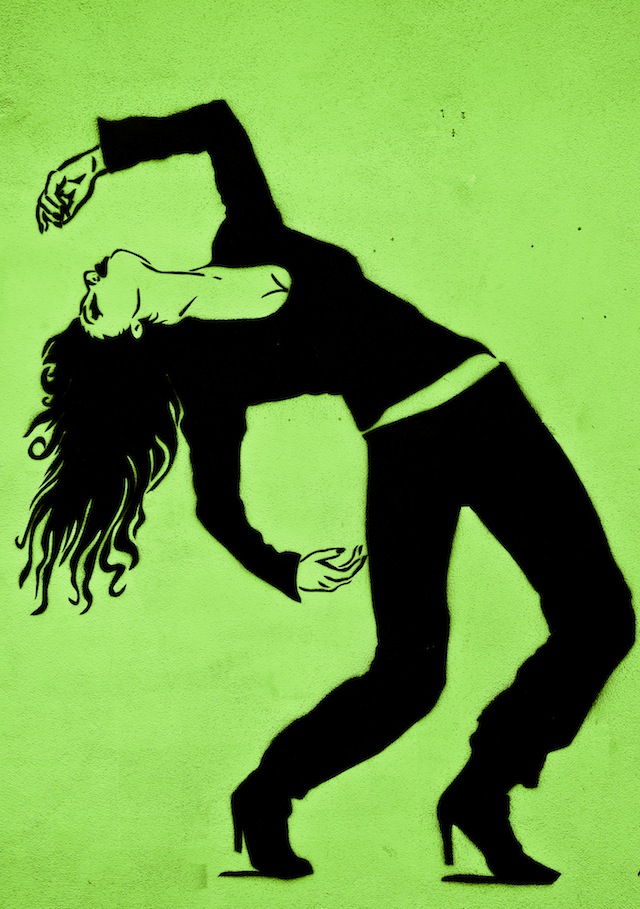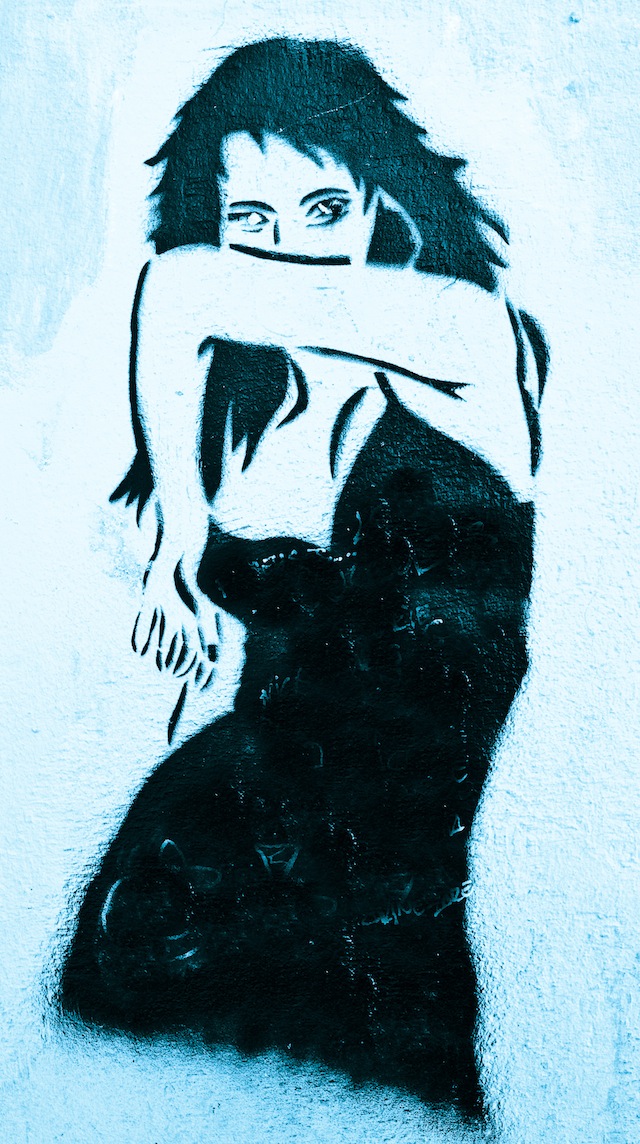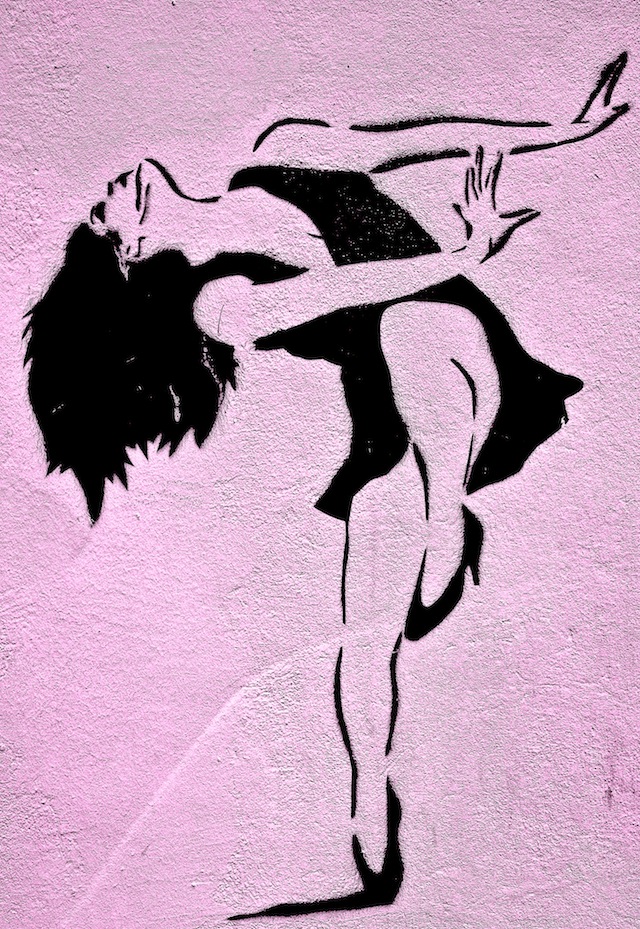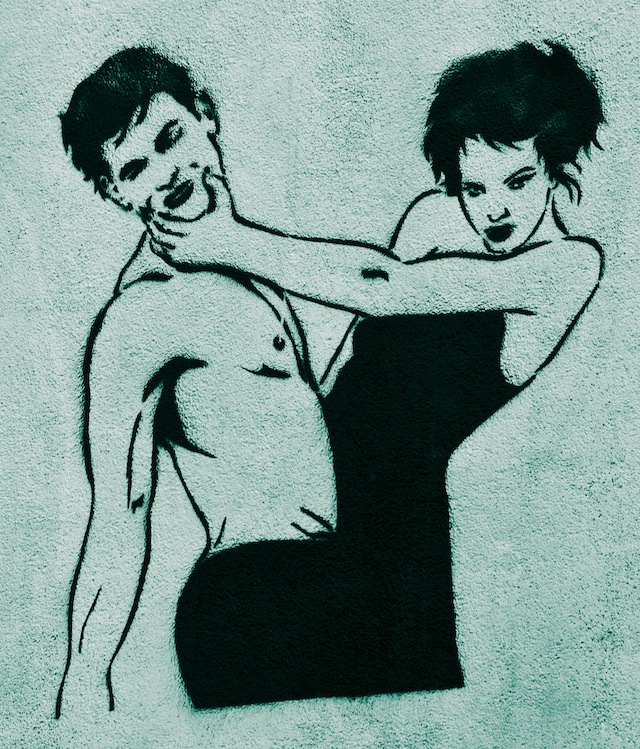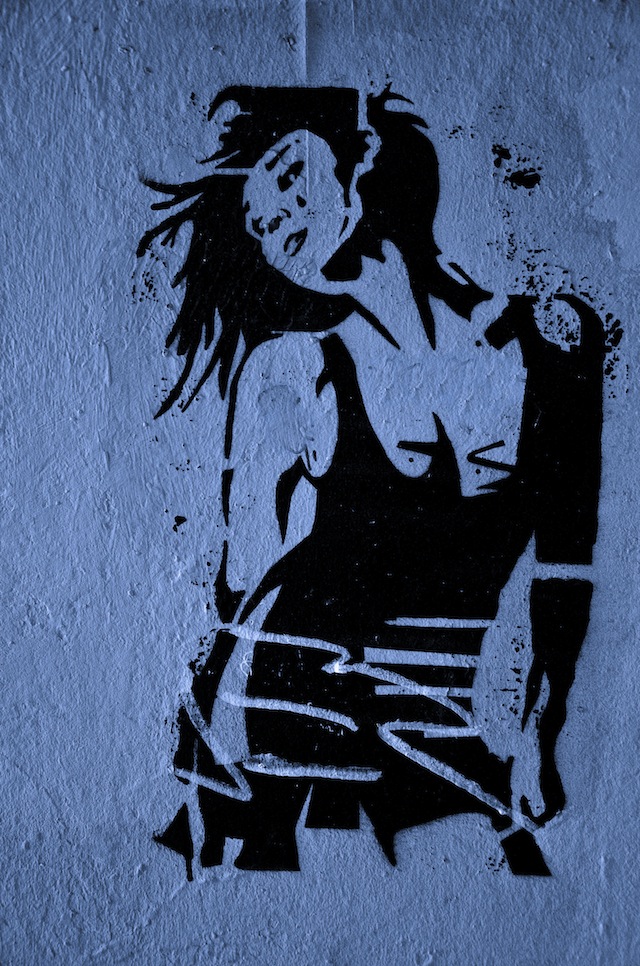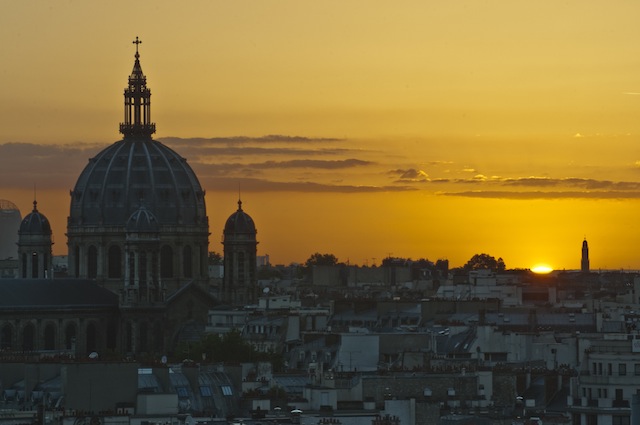
Imagine that you are the two angels in Wim Wenders’ film, “Der Himmel über Berlin,” (“Wings of Desire,” in America, though himmel translates as both "sky" and "heaven"), but instead of Berlin, you are in Paris on the evening of May 17, 2011. You can fly anywhere in the city and overhear conversations inside apartments you pass, or linger and watch and listen to the thoughts of the humans.
You might feel compassion for every human in every dwelling place you pass, including the men and women who make their home on the streets.
But surely there would be certain scenes you'd find more compelling than others. Even angels have preferences.
Surely if you’d passed by the windows of a certain apartment on Boulevard Saint-Germain, and saw a queenly woman dressed in black, with a humorous, wry expression on her face, seated on a divan facing a gathering of men and women eager to hear her stories, you would perch on the windowsill to listen. For this was a woman who’d traveled widely, and interviewed many of the leading artists of our time.
She wore big red sunglasses, red lipstick, and a scarf with a design like black and white piano keys. She wore sandals like those Gertrude Stein wore. She wore a black and white turban on her head like the ones Simone de Beauvoir wore.
And her first story was about Simone de Beauvoir.
Edith Sorel was living in Cuba, married to a Haitian, earning a living as a translator for Fidel Castro of his speeches. Since he paid by the word and discoursed at length, it was a good job.
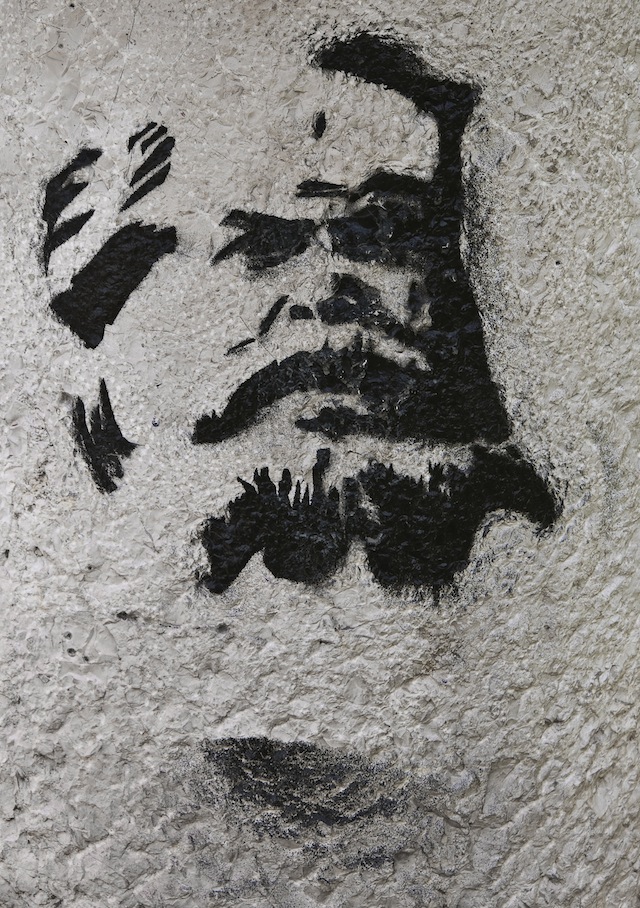
Jean-Paul Sartre came to speak in Havana, accompanied by Simone de Beauvoir. The state newspaper, Revolución, wrote an article about the noted writer, Sartre, and his companion, de Beauvoir, without a word about de Beauvoir’s accomplishments.
Edith wrote her first-ever article and fired it off to Revolución, detailing Mme. de Beauvoir’s importance as both a writer and philosopher, whose 1954 book, The Second Sex, was a clarion call for a feminist awakening.
The article was published the next day, and voilà, she received a call the following day from Simone de Beauvoir herself, inviting her to visit them at their hotel in Havana.
Edith knocked at their door, and de Beauvoir opened. She was quite beautiful, with dark hair and blue eyes, yet her voice was shrill. Whereas Sartre, who was the ugliest man Edith had ever seen, had the most beautiful voice.
Edith arranged for the French couple to meet Che Guevara, who now had the post of director of the National Bank. The meeting occurred at 4 a.m. in the bank, and Edith said that because she served as translator among the three of them, she doesn’t remember a word of what was said.
So began her career as a journalist—all because Revolución had not understood the importance of de Beauvoir, but Edith had.
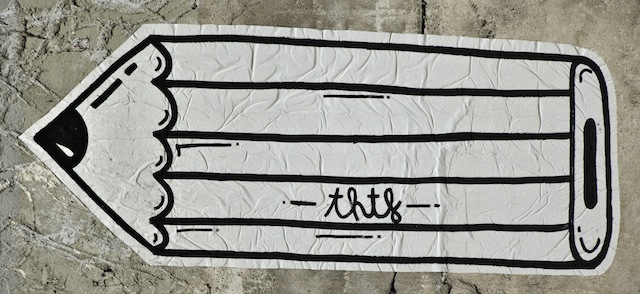
She was hired first by Revolución, then was swapped for a French journalist, and sent to work in Paris. Since she wasn’t paid much, the newspaper supplemented her pay with winters in Cuba. Her first "major assignment" was covering the 1961 Adolf Eichmann trial.
For years, Edith had lunch in Paris every six weeks with de Beauvoir. The writer liked to break from her work for lunch later than most, for exactly two hours, then return to her writing. She was very disciplined, Edith said.
And throughout the time she knew de Beauvoir and Sartre, they always looked at one another as if they’d just fallen in love, each alert for every word of the other, each acting as if they were seeing the other for the first time.
From Paris, she was sent to interview Pablo Picasso in Vallauris for his 80th birthday celebration.
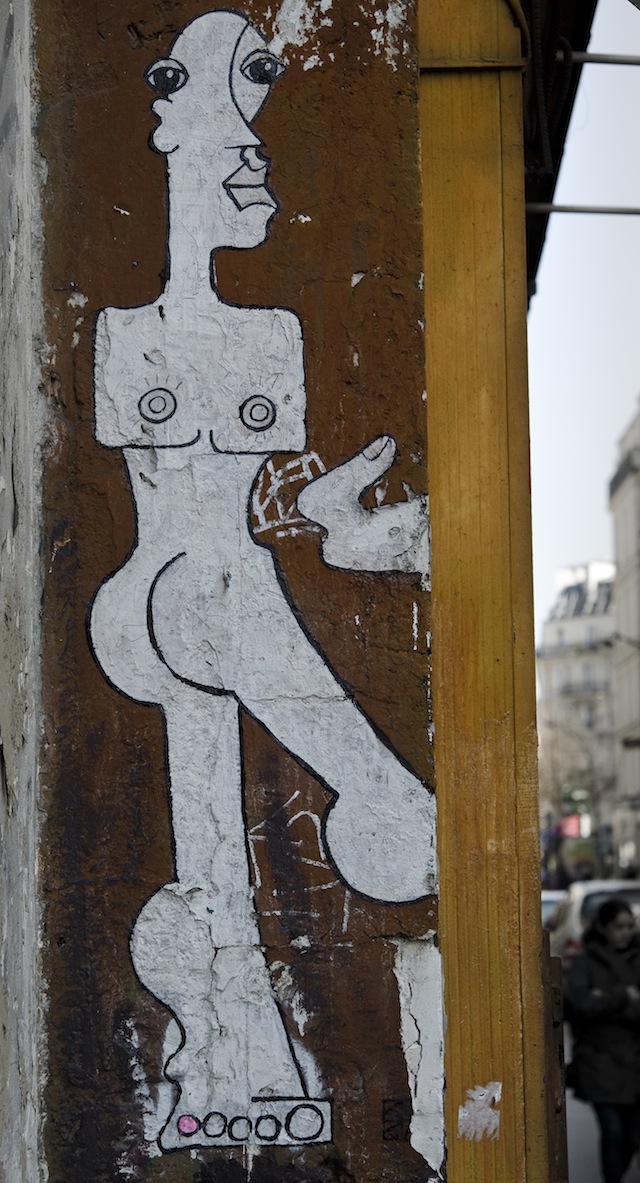
She was immediately struck by his piercing eyes. Scorpio eyes, she said. Everyone brought him huge, extravagant gifts. Great bottles of champagne and massive quantities of food. Even a large painting painted by the children of the local potters.
Picasso got down on the floor with the children and discussed every detail of the painting: “This bull is very fine, but perhaps his ear could be changed like this…”
He was full of curiosity and excitement, said Edith, just like a child, always curious about everything.
Later, as she was walking in the street with her photographer, a long Lincoln Continental pulled up beside them.
“Hola, chica,” came Picasso’s voice from the back seat. “Get in.”
They climbed in, went with him to a café, where he asked Edith, “Did you like my birthday exposition?”
The photographer kicked her under the table.
“I haven’t seen it,” she said (although she had).
“Then I will take you to see it right now!”
And so, just as the photographer knew would happen, the two of them were led through the show by Picasso, who told them all about each painting while the photographer snapped photos.
Henry Miller… Edith was assigned to interview Henry Miller in Pacific Palisades. He was close to 80 years old at the time, and his wife was nearly 50 years younger than he.
Before Edith could get to her first question, Miller said, "Sex. Right? You want me to talk about sex."
She was taken aback, but only for a heartbeat. "No. I want you to talk about love."
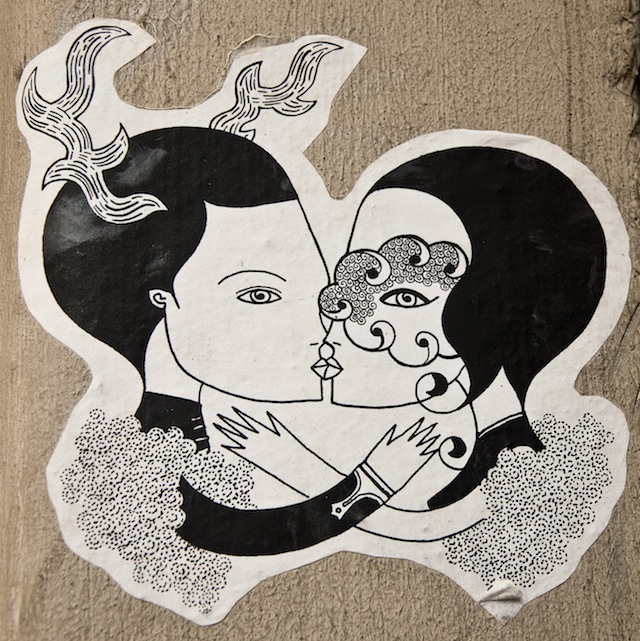
Miller looked pleased.
“You married five times. Why did you marry so often?”
“Because you had to marry women then to sleep with them.” (Does this remind you of anyone else, say, Elizabeth Taylor?) “But my great love was a woman I didn’t marry. She was 20 years older. I was 19 at the time.”
(Although Miller may have married for sex each time, his last wife, it is reported, refused to sleep with him because, "You are an old man.")
Everywhere you looked there were paintings, Edith said. Covering all the walls, and even on the ceiling. Henry Miller painted a water color every single day.
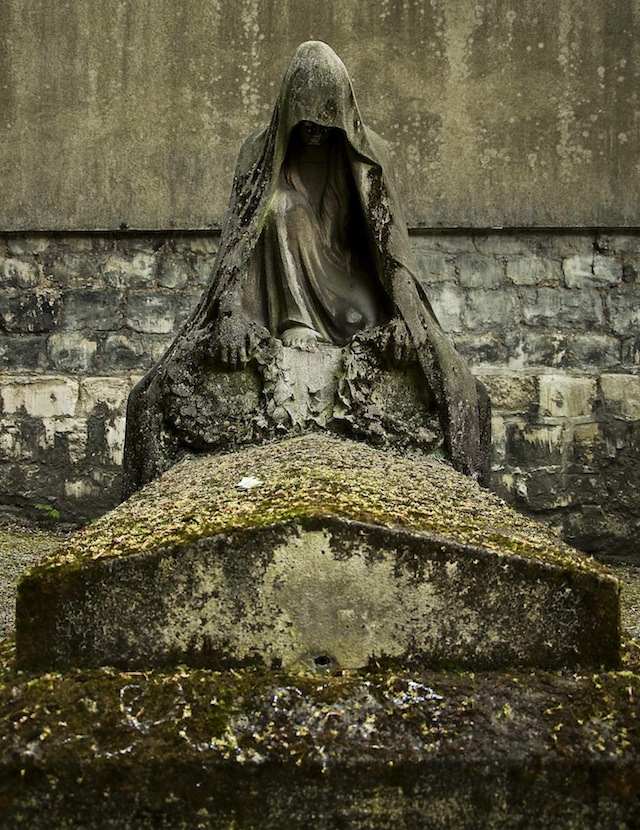
Edith made an appointment three months in advance to interview Ingmar Bergman the director of famously angst-ridden films. He was directing a play in Munich, Germany. When she arrived, the Nazi-like guard at the playhouse stopped her. No, she did not have an appointment. No, she could not see Bergman. She asked to speak to his secretary. No, he did not have a secretary.
She raised her voice, in German. The guard made a phone call. Down came Bergman’s secretary, who was appalled; apparently she had forgotten to write the appointment in Bergman’s calendar. However, Bergman’s home was not far from the theater. Perhaps she’d be willing to meet him there? This was even better, Edith said. She always liked to meet people in their own homes; it was more revealing. When she arrived, he was not there, so she poked around, and even read one of his letters. (Or so she told him, though perhaps she didn’t.)
Bergman was a man with big ears and a big nose, so in photos you couldn’t see how attractive he was. His height and figure and face all together were quite arresting. He was in an anguish of apology with her. He offered her a drink. She had her usual Scotch, and so did he. Still anguished over the forgotten appointment, he apologized, and then as they talked, they laughed and laughed, and had a wonderful time. The master of Scandinavian angst was a man of tremendous humor and joie de vivre.
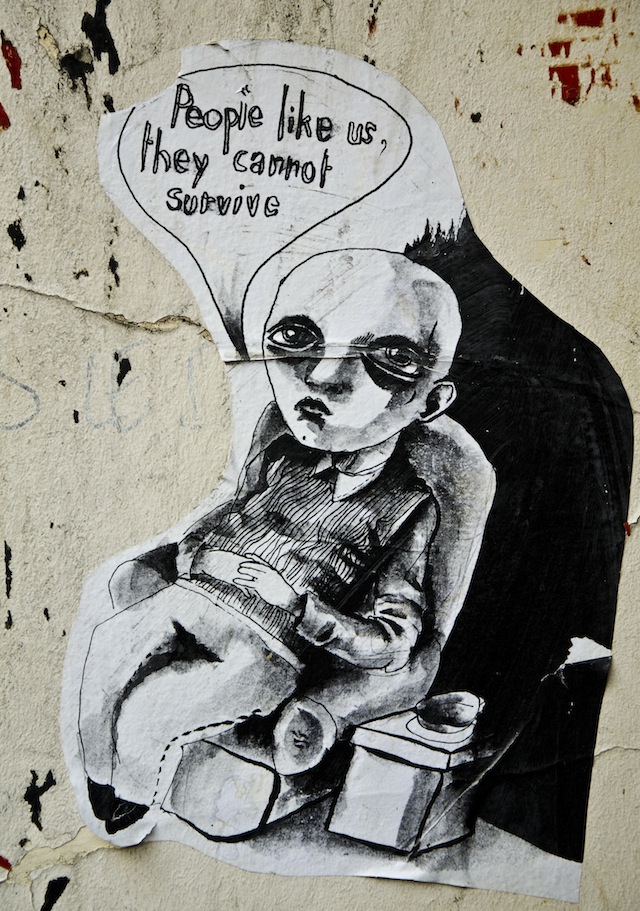
The interview with Bergman was in sharp contrast to her interview with the comedian-filmmaker Woody Allen ("He had flaming red hair, you know.") in his apartment in New York City. You would recognize it from “Annie Hall,” "Manhattan," and “Hannah and her Sisters.” All the familiar rooms.
She began by asking him about his prolific output, making a movie once a year.
“Yes,” he said.
She asked him various questions, to which he responded “Yes.” Or “No.”
He offered her a drink. It was only 11 a.m., but she needed a Scotch. It was apparent to her by now that she’d need the skills of both a dentist and a psychiatrist to get Woody to talk.
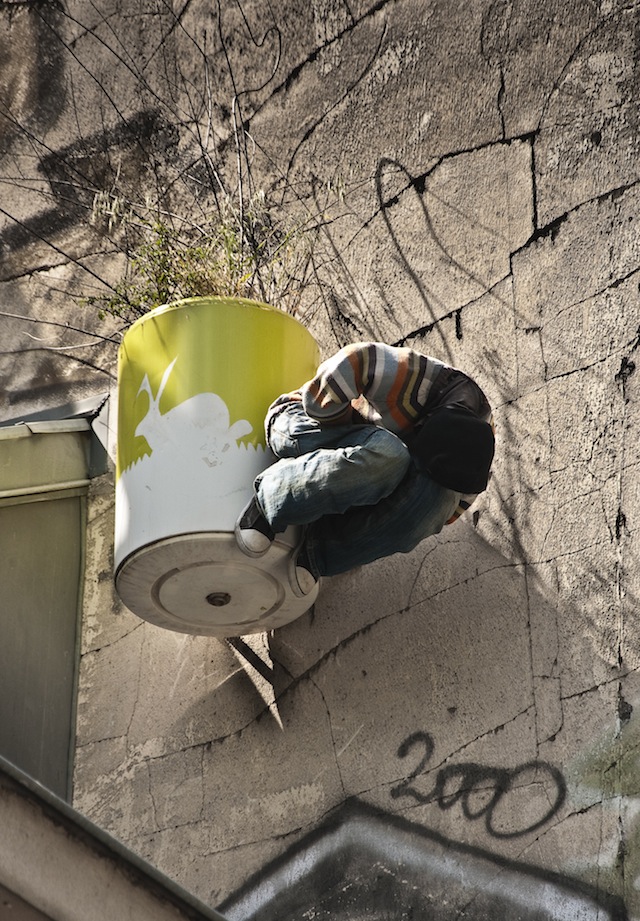
She asked him about the films of Ingmar Bergman.
“Bergman!” said Woody Allen. “He’s my god!”
“Have you met him?” Edith asked.
“No,” said Allen.
“Well, I have,” said Edith, and then, beginning with her stories of Bergman, the interview flowed.
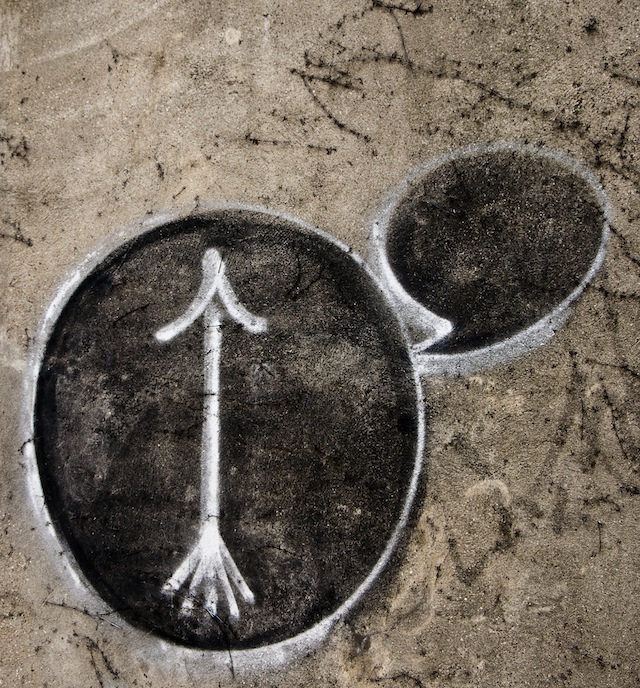
We who were perched on the windowsill wanted more stories from Edith. But a documentary is being made about the ABCs of her great life, and perhaps we’ll hear more of her stories then.
Even angels have to wait for things to come forth in their own time. And we have all eternity to receive them.
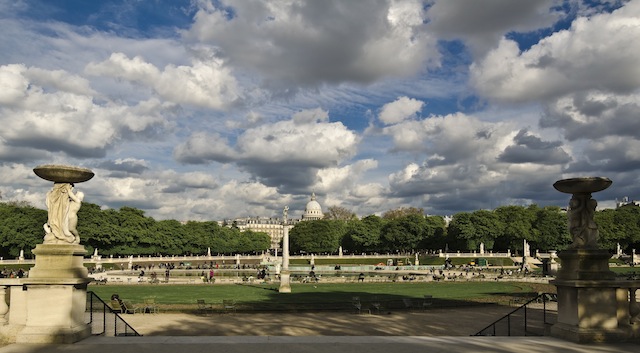
 05.9.2012
05.9.2012 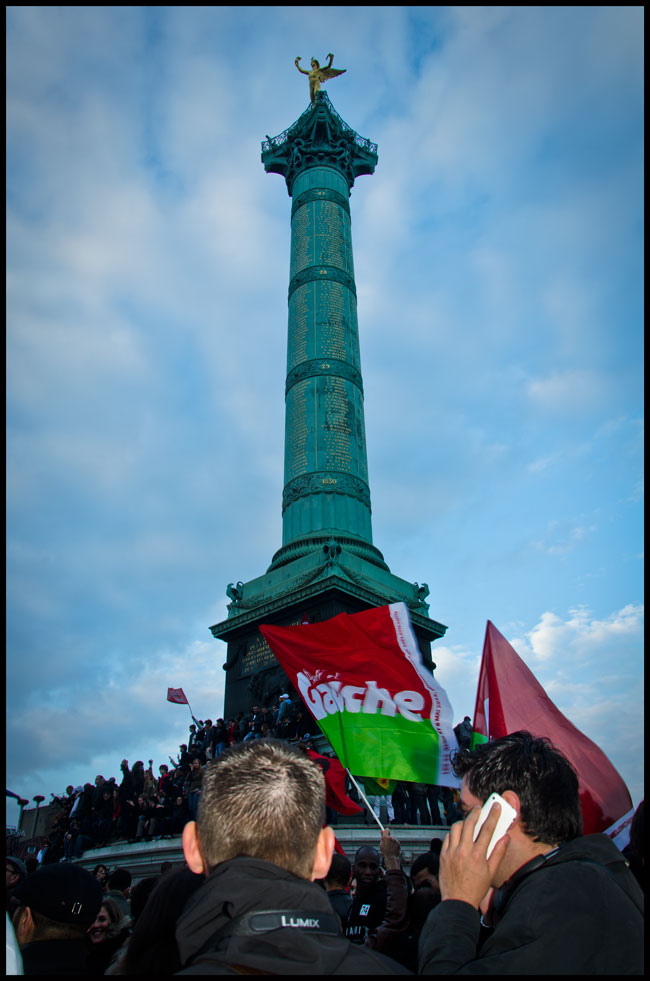
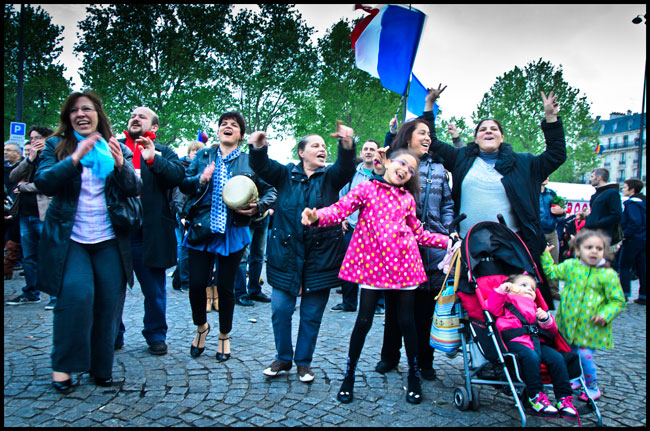 A line of (mostly) women dancing and ululating with glee
A line of (mostly) women dancing and ululating with glee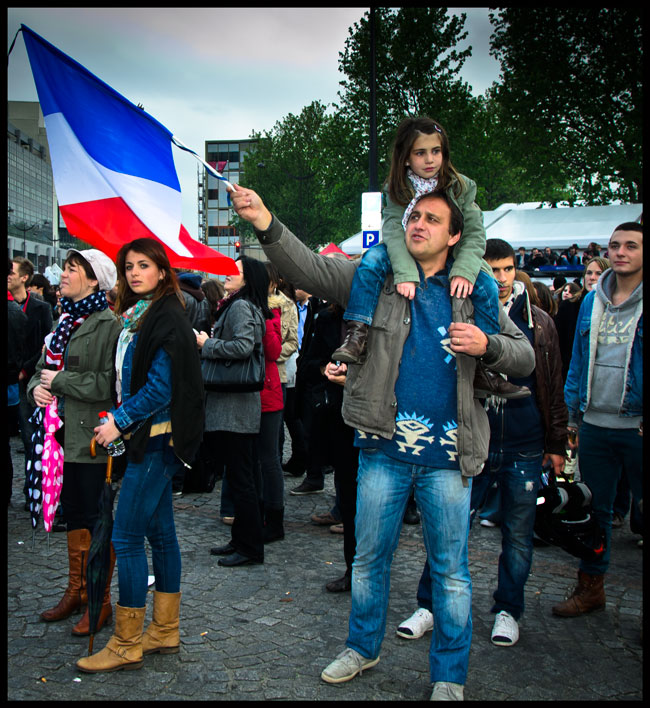 A father and daughter celebrate
A father and daughter celebrate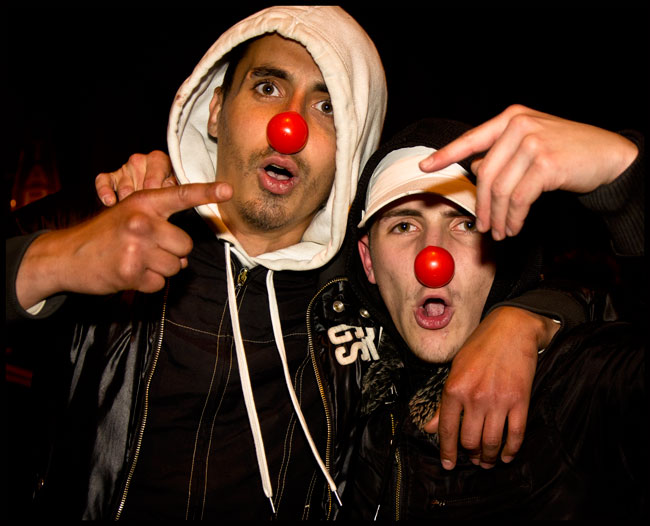 And plenty of time for silliness
And plenty of time for silliness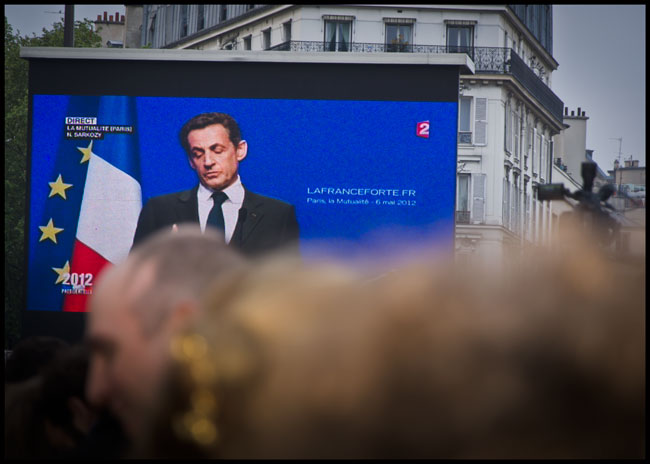 Each time the screen showed a picture of the outgoing president, seen here conceding defeat, the huge crowd booed...
Each time the screen showed a picture of the outgoing president, seen here conceding defeat, the huge crowd booed...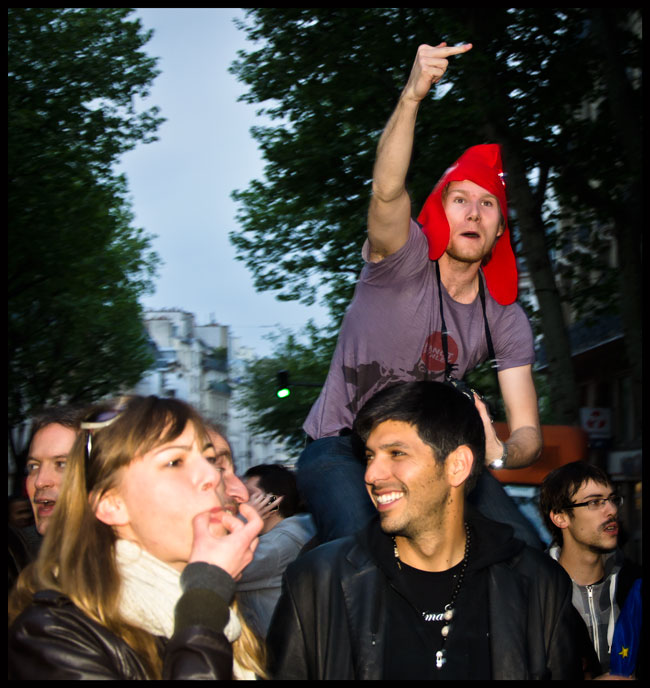 ...or worse
...or worse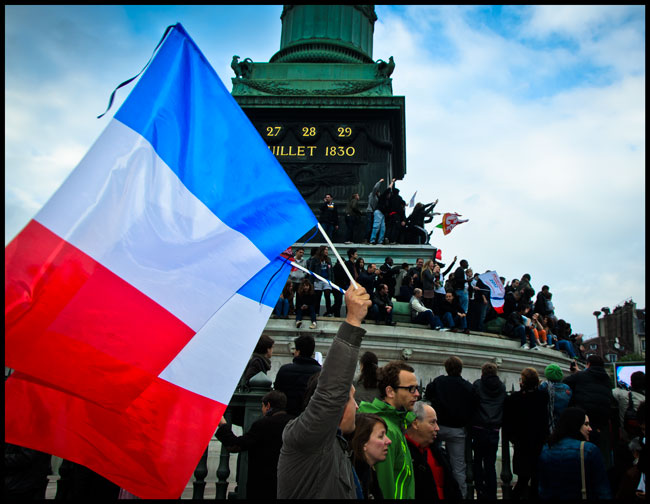 The young and lithe climbed to the base of the famous Bastille column
The young and lithe climbed to the base of the famous Bastille column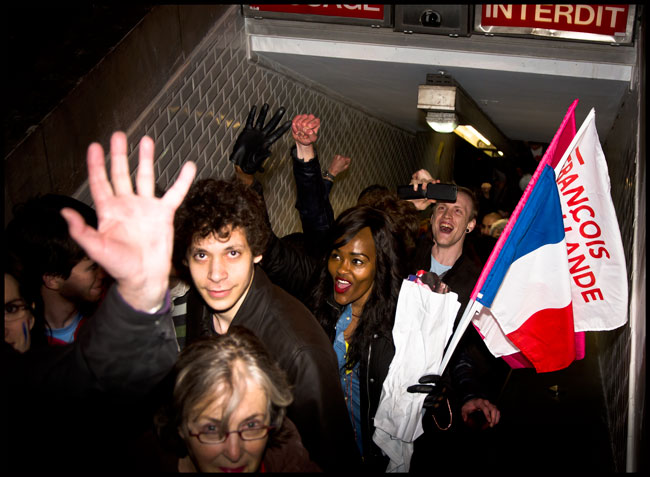 Thousands upon thousands of revelers boiled out of the Metro stations...
Thousands upon thousands of revelers boiled out of the Metro stations...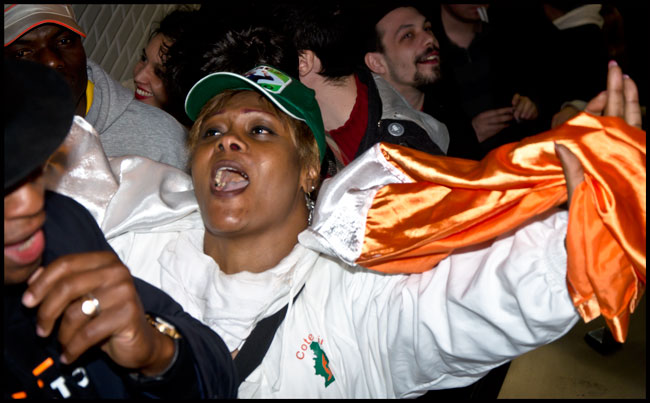 ...and boogied on to Place Bastille, swelling the crowd to at least a hundred thousand strong
...and boogied on to Place Bastille, swelling the crowd to at least a hundred thousand strong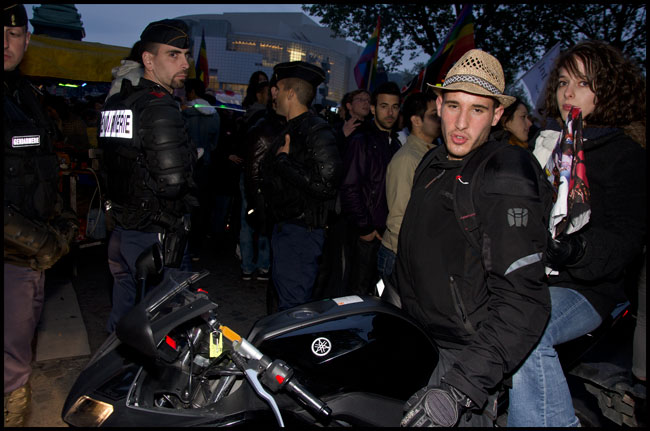 He was disappointed that the police forbade him to ride his motorcycle into the huge crowd...
He was disappointed that the police forbade him to ride his motorcycle into the huge crowd...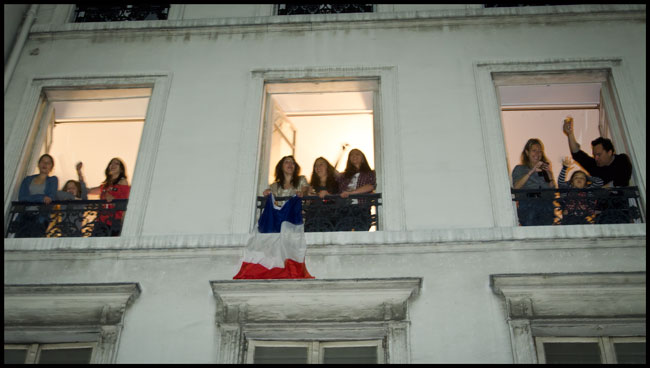 ...while these folks on rue St. Antoine cheered the celebrants from their safe second-floor perch
...while these folks on rue St. Antoine cheered the celebrants from their safe second-floor perch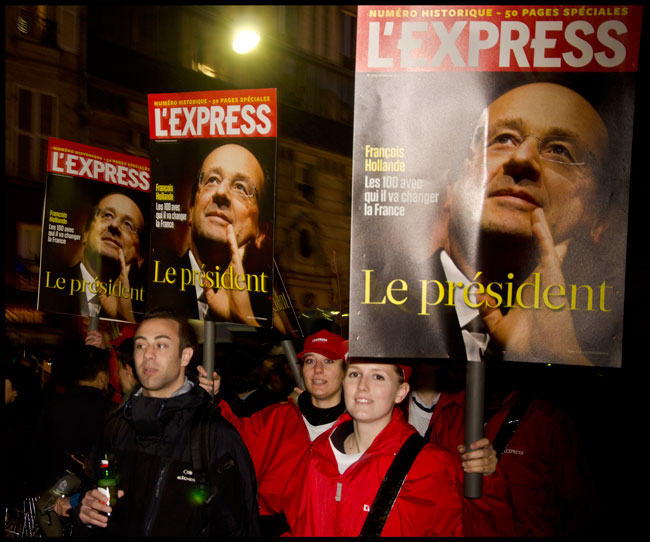 The magazine L'Express was hot off the presses within two hours, while the president-elect didn't arrive to address the waiting crowd until 12:45 the next morning
The magazine L'Express was hot off the presses within two hours, while the president-elect didn't arrive to address the waiting crowd until 12:45 the next morning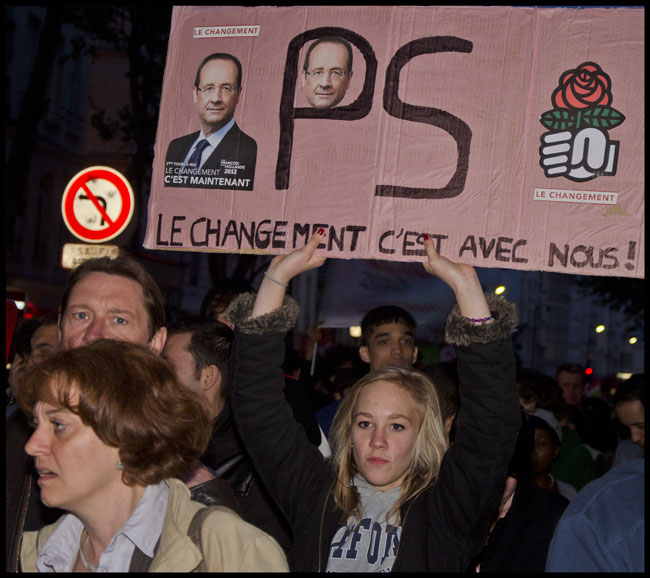 There were plenty of homemade signs, and the crowd was overwhelmingly young
There were plenty of homemade signs, and the crowd was overwhelmingly young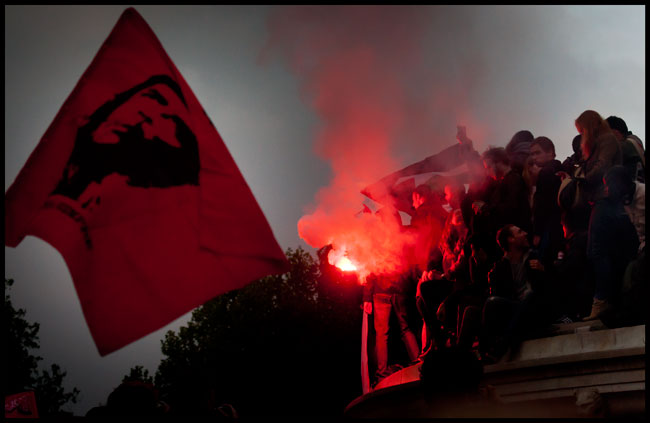 The ubiquitous image of Che Guevara, found wherever leftist internationalists gather
The ubiquitous image of Che Guevara, found wherever leftist internationalists gather